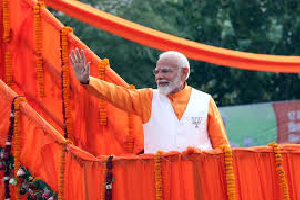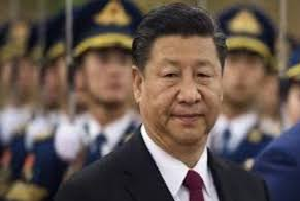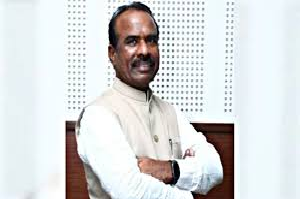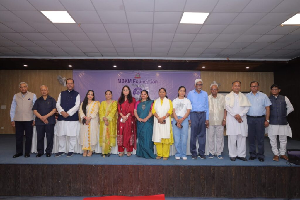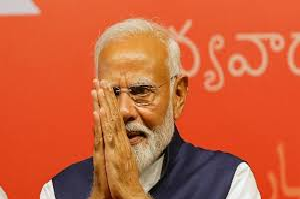6

Today’s Edition
New Dehi, 6 May 2024
Prof Shivaji Sarkar
The sparkle of GST touching collections of Rs 2.1 lakh crore due to higher contribution from NE states and UP is subdued by shattering of Indian dreams for foreign jobs as Canadian Prime Minister Justin Trudeau creates more diplomatic problems and targets Indian youth to deprive them of jobs.
Foreign job situation is becoming worse even as the domestic situation boils with high unemployment with Lok Sabha elections generating more heat. In a year marked by a surge in Indian students pursuing foreign education, those already studying abroad are facing significant challenges in securing jobs. The rising cost of living combined with limited job opportunities is shattering dreams of many non-resident Indians (NRIs).
Article at a Glance
The Indian job market, both domestically and internationally, is currently facing significant challenges. Domestically, unemployment remains high and the finance ministry has reported a surge in GST collections, but this is not indicative of job growth. The unemployment rate in December 2022 was 7.2% and in December 2023 it was 6.5%, according to the Periodic Labour Force Survey 2023. The Asian Development Bank predicts 7% GDP growth for India, while the S&P purchasing managers’ index (PMI) improved to 58.8 in April.
Internationally, the situation is also dire. Canada, a top destination for Indian youth, has limited international students to working 24 hours a week and has curtailed its startup visa plan, reducing the number of study permits issued to Indian students. The US, however, has seen a 14% increase in F-1 student visas issued to Indian students in 2023.
The job market is becoming increasingly scarce as artificial intelligence (AI) takes over many assignments. The IT sector is already resorting to heavy job cuts, with companies like Google issuing pink slips to over 1,000 employees. The AI expansion could worsen the impact on developing economies like India, which are already facing political turmoil due to job losses.
In April 2024, major tech companies like Tesla, Apple, Intel Amazon resorted to mass lay-offs. Overall job losses are estimated at 70,000. Even Byjus lays off 500 Indian staff.
India lodges strong protest on pro-Khalistan slogans raised at an event on April 29 in Toronto in which Trudeau spoke. Almost simultaneously the US raised the heat over plot to kill Khalistan separatist GS Pannun.
The events have fall out on jobs to Indians. Though the reasons also include economic turmoil in many of the western countries. Jobs are becoming dearer all over the West as IMF warns of 60 percent high skilled jobs at risk in advanced economies and predicts 40 per cent jobs to be impacted due to AI, in 2024. Severe wage cuts are imminent, IMF adds. The International Labour Organisation (ILO) says two million jobs are at stake. Global rating agency Goldman Sachs predicts disruption of 300 million (30 crore) jobs across the world.
While rising 12.4 percent April GST mop up of the highest ever Rs 2.1 lakh crore (trillion) elates the finance ministry, which says, it is the result of intense auditing, crackdown on bogus registration, fake invoices and norms tightening. Domestic transactions rise by 13.4 percent while the import figures is up by 8.3 percent.
Supreme Court, on May 2, saying “there can be harassment of people” tells the additional solicitor general SV Raju to submit data in GST Act notices and arrests made “for alleged defaults of Rs 1 and Rs 5 crore”.
Interestingly, North-East led the GST show. Mizoram, with 35 percent rural poverty, led it with 52 percent, Nagaland had 3 percent lower contribution with Meghalaya and J&K 2 percent less and Sikkim kitty fell 5 percent. Elsewhere, the highest growth was in UP – 19 percent, Gujarat and Maharashtra - 13 percent.
The GST rise is not an indicator of job rise. Periodic Labour Force Survey 2023 indicates the unemployment rate at 7.2 percent in December 2022 and 6.5 percent December 2023 and CMIE puts it at 8 percent in February 2024 and 7.6 percent in March.
Asian Development Bank predicts 7 percent Indian GDP growth as S&P’s purchasing managers’ index (PMI) improves to 58.8 in April from 16-year-high of 59.1 in March.
Canada, one of the topmost destinations for Indian youth, on the Labour Day limits international students working hours to 24 hours a week from 40 hours and also curtails startup visa plan to less than 1000. This cuts intake from India to 87,000 study permits against 2.2 lakh new students in 2022.
On average a student loses $ 5000 a year, says Mateusz Salamassi, Canadian director of advocacy, Canadian Alliance of Students Association, a blow to debt-ridden Indian students. Most students have debts of Rs 20 to 40 lakh, which they repay as they work while studying. Cost of living is rising. Rents range from $1,000 to $1,500 per month. Additionally, expenses for food, transport, and utilities cost at least another $1,000 to $1,200 every month.
With 6.1 percent unemployment reported in Canada, many end up without jobs or get into menial works that is not in keeping with their needs or qualifications. As the going gets tough, many students are turning to drugs to cope up with the stress and get into a worse debt and psychic situations.
Jobs worldwide are becoming scarce as artificial intelligence (AI) takes over many assignments. It is no better in the UK. Even restaurants are sacking them too often. Foreign student, health & care and skilled work visa applications to UK also fall with new curbs. Other visas fall by 44 percent to 40,700 against 72,800 last year. It cuts application for dependent visas to 6,700 against 32,900 a year back. Foreign students now longer can switch to a work visa before completing their course and graduate visa norms might limit job prospects.
Slightly bright spot for Indian students is the US. It issued a total of 1,30,839 F-1 student visas in 2023, witnessing a 14 per cent surge from 2022, says an Apply Board report.
The International Labour Organisation (ILO) projects that the labour market outlook and global unemployment will both worsen. In 2024, an extra two million workers are expected to be looking for jobs, raising the global unemployment rate to 5.2 per cent from 5.1 per cent in 2023.
The AI expansion could worsen impact on developing economies like India, which are facing political turmoil for job losses. An added woe could be degrees might lose shelf life as technical skills would require continuous updating, learning and adaptation throwing up challenges for Indian universities. Even many companies might go out of business. The world has yet to evolve pro-active measures to cope up with AI transformation.
The IT sector is already resorting heavy job cuts. The Google has issued pink slips to over 1,000 employees assisting in voice assistance, hardware and engineering teams. It also implemented job cuts across Python, Flutter and Dart teams.
The job loss in IT sector is a major problem along with many other Indain industries. More than 40 percent of college graduates under the age of 25 are unemployed, compared with 11 percent of those of the same age group who are literate but haven't completed primary school, says Azim Premji University 2023 report.
India would have to launch crash moves to create jobs to keep Indian economy in the lead. It is not an easy task with job recruitment scandals in West Bengal, UP, MP and many other states.
While AI is certain to make its way into numerous Indian industries, the country has to take the best advantage of it in creating multifarious jobs as well.
---------------








